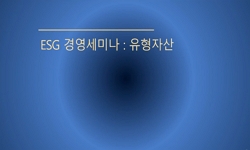This study is designed to write the program for practical guidelines and training in order to provide market participants with the full understanding of valuation methods and procedures in intangible assets. We first introduce the types of identifiabl...
http://chineseinput.net/에서 pinyin(병음)방식으로 중국어를 변환할 수 있습니다.
변환된 중국어를 복사하여 사용하시면 됩니다.
- 中文 을 입력하시려면 zhongwen을 입력하시고 space를누르시면됩니다.
- 北京 을 입력하시려면 beijing을 입력하시고 space를 누르시면 됩니다.

사업결합 시 무형자산별 평가기법 및 평가절차에 대한 실무지침 및 교육교재 = Practice Guidelines and Education Materials of Valuation and Procedures of Intangible Assets in Business Combinations
한글로보기https://www.riss.kr/link?id=A99726878
- 저자
- 발행기관
- 학술지명
- 권호사항
-
발행연도
2012
-
작성언어
-
- 주제어
-
KDC
300
-
등재정보
KCI등재
-
자료형태
학술저널
- 발행기관 URL
-
수록면
293-330(38쪽)
- 제공처
- 소장기관
-
0
상세조회 -
0
다운로드
부가정보
다국어 초록 (Multilingual Abstract)
This study is designed to write the program for practical guidelines and training in order to provide market participants with the full understanding of valuation methods and procedures in intangible assets. We first introduce the types of identifiable intangible assets in business combinations. And then we present the valuation methods to be applied for major intangible assets by type and describe the steps to take in the process of intangible asset valuation. In doing so, we provide valuation cases to help readers better understand the methods and procedures of intangible asset valuation. The typical fair value method to be applied for marketing-related intangible assets such as trademarks is the relief from royalty method(RFRM). This method first calculates the royalty amount to be saved by multiplying future cash flows by the royalty rate, and then estimate the values of intangible assets by discounting the royalty amount. The fair value method to be applied for customer-related intangible assets including both contract or non-contract customer relationships is the multi-period excess earnings method(MEEM). This is the valuation method which estimates revenues and expenses occurring from the intangible asset for its useful life in order to estimate a profit, and then subtract the charges of contributory assets from the estimated profit to estimate the value of the intangible asset. The types of intangible assets which employ the MEEM for valuation include order backlog and production backlog. The fair value contract-based intangible assets is measured by the current replacement cost, the amount that at the measurement date would be required to replace the service capacity of the asset. The typical fair value measurement for technology-based intangible assets are RFRM or the cost of replacement. How intangible assets are classified and measured in business combinations are critical in determining future earnings. Thus, fair value measurement of intangible assets is an important issue, but subjective judgements and assumptions are not avoidable. We expect the valuation methods, procedures and cases discussed in this study to be useful to IFRS-adopting companies, auditors, regulatory bodies, and financial statement users.
동일학술지(권/호) 다른 논문
-
- 한국회계학회
- 이상완 ( Sang Wan Lee )
- 2012
- KCI등재
-
- 한국회계학회
- 최연식 ( Youn Sik Choi )
- 2012
- KCI등재
-
K-IFRS 도입 후 세무 상 변화에 대한 국내 은행의 사례연구
- 한국회계학회
- 최원욱 ( Won Wook Choi )
- 2012
- KCI등재
-
현대건설의 구조조정과 부활 무상감자와 대출금 출자전환을 중심으로
- 한국회계학회
- 최종학 ( Jong Hag Choi )
- 2012
- KCI등재




 KISS
KISS







